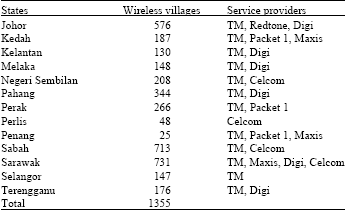Review Article
Potential Benefits of the Wireless Village Programme in Malaysia for Rural Communities
Department of Communication, Faculty of Modern Language and Communication, Universiti Putra Malaysia, Malaysia
Siti Zobidah Omar
Institute for Social Science Studies, Universiti Putra Malaysia, Malaysia
Jusang Bolong
Department of Communication, Faculty of Modern Language and Communication, Universiti Putra Malaysia, Malaysia
Hayrol Azril Mohamed Shaffril
Institute for Social Science Studies, Universiti Putra Malaysia, Malaysia
Jeffrey Lawrence D`Silva
Institute for Social Science Studies, Universiti Putra Malaysia, Malaysia










mohammad hossein javadi Reply
Hi and thanks again for your kindly, I am passing PhD on the course Development of rural. very happy to have your paper